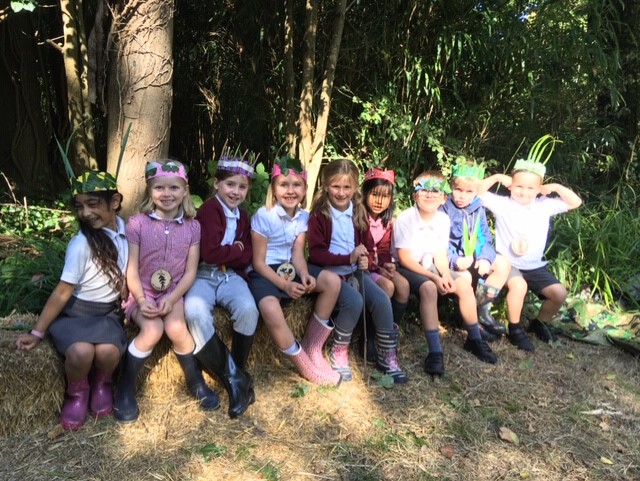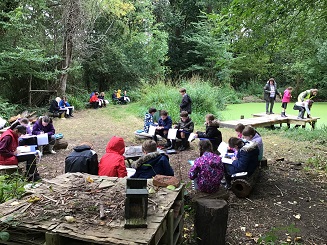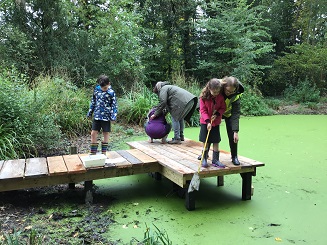Woodland Learning at CPS
At Claygate Primary School, our Woodland Learning programme provides all children with the opportunity to engage in outdoor activities that promote problem-solving, resilience, and a positive relationship with the natural world. Through hands-on experiences, children choose, initiate, and drive their own learning, embracing appropriate challenges and risks. This outdoor learning fosters key life skills like independence, teamwork, and confidence, which they carry back into their classroom environment, enriching their academic growth and encouraging positive behaviour.
Our Woodland Learning Vision
Woodland Learning at CPS is designed to inspire and support the holistic development of each child. We aim to nurture social, physical, intellectual, creative, emotional, and spiritual growth through outdoor learning experiences in both our Mini-Woodies area and the Woodland Learning Zone. Set within our beautiful, tree-lined school grounds, these areas offer a rich environment for discovery, exploration, and development.
Our Aims:
- To provide a child-centred, inspirational learning process that fosters holistic growth.
- To develop a range of skills: social, physical, intellectual, creative, emotional, and spiritual.
- To strengthen each child’s character, focusing particularly on resilience.
- To encourage collaborative learning, emphasizing teamwork and independence.
- To build confidence and self-esteem through learner-led, hands-on experiences in nature.
What Children Learn in Woodland Learning
Learning in the outdoors provides a unique opportunity for children to grow their character, creativity, and well-being. Whether through social interactions, self-esteem-building activities, or reconnecting with nature, our children are continually inspired by their environment.
Outdoor activities allow children to develop a strong sense of curiosity and engagement with the natural world. From building dens and crafting with tools to studying plant and animal life, children gain valuable insights into the environment. They also enhance their observation skills and develop a sense of responsibility and respect for nature.
Key Activities in the Woodland Learning Zone:
- Den Building: Encouraging teamwork and creativity as children construct shelters from natural materials.
- Craft Making and Tool Work: Children learn new skills while crafting, developing fine motor skills and confidence.
- Reconnecting with Nature: Children learn about plant and animal life, engage in pond dipping, and practice fire-building.
- Science and Ecology: Focusing on ecosystems, habitats, and the creatures that inhabit our environment, such as birds. We participate annually in the Big Schools’ Birdwatch to observe and identify local species.
One of the most exciting parts of Woodland Learning is its adaptability to the children’s interests. For example, during one session, the children became captivated by an abundance of ladybirds. This sparked a mini-project where they counted ladybirds, investigated their favourite spots, and hypothesised why there were so many that day. Their natural curiosity flourished as they learned more about these fascinating insects.
Safety in the Woodland Learning Zone
Safety is always a priority in our outdoor learning spaces. All activities are carefully planned to ensure children’s well-being while they explore and interact with nature.
Assessment of Learning
We assess children’s progress through Assessment for Learning, using mini-quizzes, observations, and feedback during child-led activities. This allows us to adapt sessions and tailor learning to the children's interests and needs, ensuring that every child’s learning journey is meaningful and engaging.



